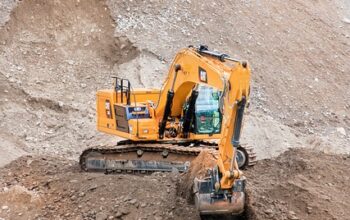Commercial snow plowing operations face significant challenges like slippery roads, heavy equipment operation, and extreme weather. To ensure driver and operator safety, effective risk management strategies include safety protocols, regular staff training, well-maintained equipment, and proactive pre- and post-storm assessments. Training, equipment maintenance, clear communication, and contingency planning are cornerstones of accident prevention, enhancing safety for workers and the public during snow removal operations.
Ensuring safety in commercial snow plowing operations is paramount, given the inherent risks associated with clearing heavy, dense snowfall. This article delves into the critical aspects of maintaining a secure work environment for commercial snow removal services. We explore common hazards, from slippery surfaces to equipment malfunctions, and provide best practices for accident prevention. Key topics include the role of comprehensive training, regular equipment maintenance, fostering a safety-conscious culture, and effective communication strategies for emergency preparedness.
- Understanding the Risks: Common Hazards in Commercial Snow Plowing
- Best Practices for Ensuring Safety on the Job Site
- Role of Training and Equipment Maintenance in Accident Prevention
- Enhancing Safety Culture: Communication and Emergency Preparedness Strategies
Understanding the Risks: Common Hazards in Commercial Snow Plowing

Commercial snow plowing operations present a unique set of challenges and risks that require meticulous planning and awareness. Before initiating any snow removal task, it’s crucial for businesses to understand the potential hazards associated with this work. Common dangers include slippery road surfaces, heavy equipment operation, and exposure to extreme weather conditions.
One of the primary concerns is ensuring driver and operator safety when managing large vehicles and machinery. Additionally, rapid changes in temperature and humidity levels can contribute to ice formation, making roads even more hazardous. Efficient risk management involves implementing safety protocols, regular training for personnel, and well-maintained equipment to mitigate these risks and provide a reliable commercial snow removal service.
Best Practices for Ensuring Safety on the Job Site

When it comes to commercial snow plowing, safety should never be compromised. Implementing best practices is a non-negotiable aspect of any reputable commercial snow removal service. One key practice involves thorough pre- and post-storm assessments. This includes evaluating road conditions, understanding ice formation, and identifying potential hazards. By anticipating challenges, operators can proactively adjust their plowing techniques and equipment settings, ensuring maximum efficiency and safety.
Moreover, regular training and clear communication are vital. Employees should be equipped with the latest safety protocols and regularly reminded of emergency procedures. Effective communication among team members, supervisors, and clients is essential for a smooth and secure operation. Additionally, maintaining well-equipped vehicles with up-to-date snow removal technology ensures that plowing operations can adapt to changing weather conditions, enhancing overall job site safety.
Role of Training and Equipment Maintenance in Accident Prevention

Training plays a pivotal role in accident prevention for commercial snow removal services. Equip employees with comprehensive training on safe operating procedures, including proper use of snow plows and other equipment, to minimize the risk of accidents. Regularly update training programs to incorporate new technologies and industry best practices, ensuring that workers are always equipped with the knowledge needed to handle challenging winter conditions safely.
Equipment maintenance is another critical component of accident prevention. Keep all vehicles and machinery in top-notch condition through consistent maintenance checks. Address any issues promptly, such as worn-out brakes or faulty lights, which could lead to hazardous situations. A well-maintained fleet ensures optimal performance and reliability during snow removal operations, thereby enhancing safety for both workers and the public.
Enhancing Safety Culture: Communication and Emergency Preparedness Strategies

In any commercial snow plowing operation, enhancing a safety culture is paramount. Effective communication strategies are at the heart of this culture. Snow removal crews should be adequately trained and equipped with clear protocols for reporting hazardous conditions or emergencies. Regular meetings and briefings can foster open dialogue, ensuring everyone is on the same page regarding safety procedures. This includes discussing potential risks, emergency contact lists, and evacuation routes. A well-informed crew is better prepared to handle unexpected situations swiftly.
Emergency preparedness goes hand in hand with effective communication. Commercial snow removal services should develop contingency plans for various scenarios, such as severe weather warnings, equipment malfunctions, or accidents. Regular drills can help crews practice these plans, improving their response time and coordination during actual emergencies. By prioritizing open communication and comprehensive emergency preparedness, commercial snow plowing operations can significantly reduce risks and ensure the safety of both employees and the public.




